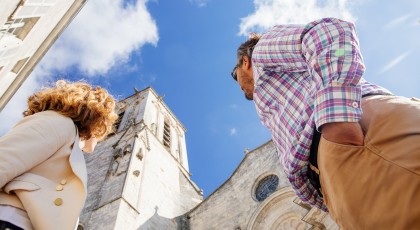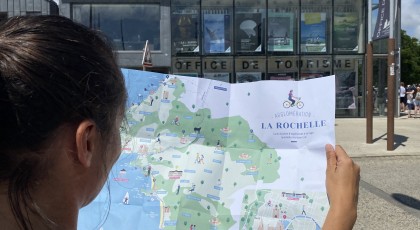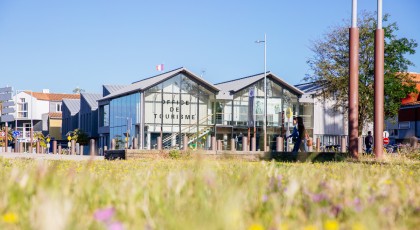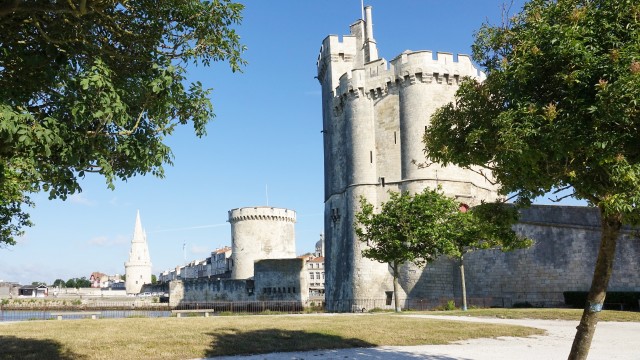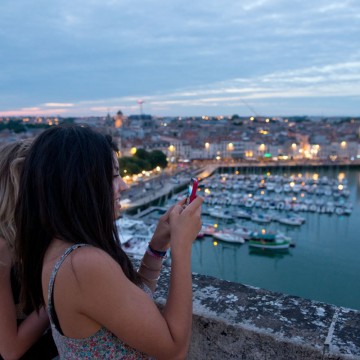Classified as Historical Monument since 1879
La Tour Saint-Nicolas (Saint-Nicolas Tower)
According to legend, the Tour Saint-Nicolas was built by the Mélusine fairy. While she flew over La Rochelle with the stones from a destroyed castle, her apron ripped. The stones fell on top of one another and formed La Tour Saint-Nicolas...
The tower, which has no evidence in any historical document as to when it was built, makes up the entrance to La Rochelle’s Vieux Port (old port), along with the Tour de la Chaîne. For decades it acted as a defensive barrier between the sea front and the city. With a real urban keep and a palace looking out over the sea, this military building symbolises the power and wealth of La Rochelle.
The 38 metre tower was completed in 1376 and is built on long oak stakes driven into the mud and wedged in by stones. But during its construction, the tower sunk in the unstable ground and leaned to the North-East. It was then reinforced and from the 2nd floor onwards it straightens up again. This slight tilt can still be seen today.
Tour de la Chaîne (Chain Tower)
After completing the Tour Saint-Nicolas, the town built the Tour de la Chaîne between 1382 and 1390. Its name comes from the big iron chain that had to be moved with a winch to let the boats in and out of the Vieux Port. The captain of the tower therefore monitored the boats’ movements and passage rights and fees.
In 1472, King Louis XI visited the tower. According to legend, he etched an inscription on one of the tower’s windows with the diamond on his finger...
As the tower was a powder keg during the Fronde (an uprising against the monarchy during Louis XIV’s minority), the tower exploded and for 300 years was left open-topped. Important restoration work took place in the 20th and 21st centuries where the castellated rampart walkway was rebuilt, a new roof was put in and 2 indoor floors were reinstated.
La Tour de la Lanterne (Lantern Tower)
The origins of the Tour de la Lanterne date back to the end of the 17th century. Located on the corner of the sea wall of the St-Jean-du-Pérot district, is the last medieval lighthouse on the Atlantic coast, which has always been both a lighthouse and a prison.
Firstly, there is the residence of the “ship disarmer” (who was in charge of disarming the ships before they entered the port) which features a monumental arrow and a lantern to guide sailors. Standing at 55 metres tall, you can see it from all around the Pertuis d’Antioche (strait between the Ré, Aix and Oléron islands) and it is part of the “sea look-out” for the military surveillance of the coast.
As of the 16th century, the tower was used as a prison. Sailors and prisoners of war captured at sea were locked up here, who were mainly English, Dutch and Spanish. Protestants were also locked up when the Edict of Nantes was revoked, as well as militants from the Vendée. In 1822, the “Quatres Sergents” (Four Sergeants), who were the ringleaders behind a plot to overthrow King Louis XVIII, were arrested in La Rochelle, two of which were imprisoned in the tower before being guillotined in Paris... a story that earned it (among others) the nickname “Tour des 4 Sergents” (4 Sergeant Tower).

